Welcome to our insightful analysis as we explain all the symptoms that would indicate a damaged wheel bearing. Starting from strange sounds, vibrations in the steering, and increasing noise and vibrations whilst the vehicle is moving are all indicators for a defective wheel bearing that needs to be replaced. The signs that lead to a damaged wheel bearing, how to spot them, the reason that leads to its failure, and when the right time to replace them will all be discussed in detail in this article. In addition to that, we will also explain the expenses and other services, including DIYs and professional services that are cost-effective for wheel bearing replacement. With all the knowledge of this wheel bearing that will be discussed, symptoms for its failure, its signs, and when its damage leads to safety and performance threats will all be carefully explained to achieve optimal understanding. All that is crucial for the understanding of this automotive part will be elaborated on to help you better understand it all.
What Are the Symptoms of a Bad Wheel Bearing?
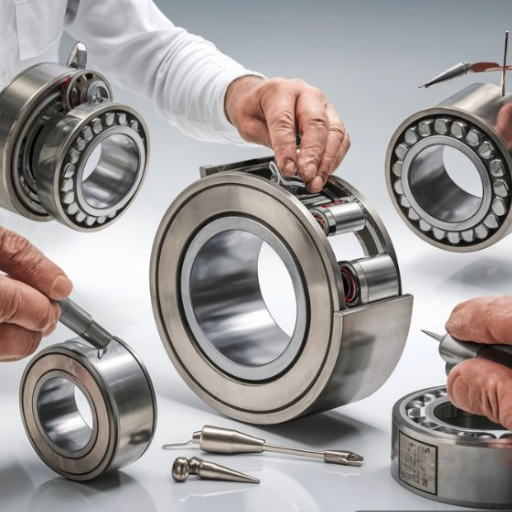
The negative impact of automotive components can vary greatly, I know for certain that bad wheel bearings can also result in failure. Here are a few points to remember on that topic :
- Unusual Noises: Moving on to the sounds that a bad wheel bearing can produce, there are grinding, growling, humming, or even rumbling sounds as well. These sounds are located mostly at the center of the vehicle while in motion.
- Vibrations in the Steering Wheel: If you have any feeling of pulsating or vibration from the steering wheel then it is fairly likely that you have a worn or damaged wheel bearing.
- Increased Vibration and Noise with Vehicle Speed: As the vehicle gets moving to a higher speed, it is fairly likely for a bad wheel bearing to generate increased sounds and noise.
Such symptoms should never be overlooked or disregarded as there is risk of certain safety issues occurring and the performance and handling of your vehicle would be hindered. Safety of your automobile while on the road is contingent on regular and timely inspections and subsequent replacement of a faulty wheel bearing.
Unusual Noises: How a Bad Wheel Bearing Can Cause Grinding
I find it crucial to address this query of how a bad wheel bearing can create grinding noises. Wheel bearings that are worn out or damaged can cause metal-on-metal contact where rotating pieces such as the wheel hub or the axle could touch. This grinding noise may also occur due to friction arising when the bearing is worn out, which no longer provides smooth and efficient rotation. This symptom, if not observed, can have some adverse consequences on your vehicle since a damaged wheel bearing can be used only to a certain extent, after which it fails. It is necessary to address such issues, and all unusual noises must be repaired as soon as possible to ensure safe functioning. It cannot be overemphasized enough that using a vehicle with a faulty or underlying wheel bearing is unwise.
Vibrations in the Steering Wheel: A Common Symptom
Based on my experience, steering wheel vibrations can be a sign of failure for the wheel bearing. Once the wheel bearing starts to go bad, it can both cause and transfer vibrations to the steering wheel while in use. Such vibrations can start as minor but will become more severe as the bearing condition worsens. If there is noticeable vibration in the steering wheel, it is crucial that the wheel bearing is checked and, if needed, replaced so that the vehicle can run safely.
Increased Vibration and Noise with Vehicle Speed
an increase in vibration and noise with increased vehicle velocity suggests that there is a probable failure that might occur with the wheel bearings. For instance, when the wheel bearing begins to wear out or sustains damage, it induces vibrations in the steering wheel while driving. As previously described, it may not be easy to notice vibrations at the very beginning, but they become prominent as the wheel bearing becomes faulty. Furthermore, wheel bearers, when malfunctioning, can produce some noise, like grinding or humming at best during high speeds. If you notice these symptoms, it is of utmost importance to get your wheel bearing checked and, if necessary, changed out. Doing so ensures the safe functioning and seamless operation of your vehicle.
How to Check for a Bad Wheel Bearing
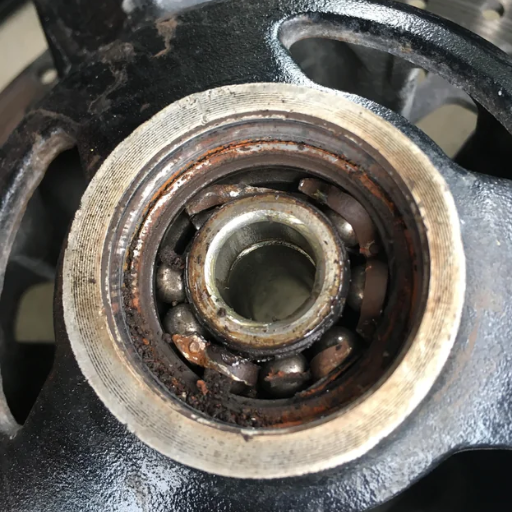
Speaking of wheel bearings, let’s take a look at how you can examine a bad wheel bearing to give you a more personal and succinct perspective as an industry expert. When examining wheel bearings, there are several critical indicators to be attentive to. Become sensitive to sounds that your wheels should not emit, such as grinding or a hum, especially when cruising at high speeds. Such noises are suggestive of an insufficiency in the wheel bearing. Furthermore, also take note of any close control in motion of the steering wheel, as this is another characteristic of a defective wheel bearing. You could conduct a wheel bearing inspection starting by raising the vehicle and checking for excessive movement or looseness of the wheel. You could also hand spin the wheel to check if the rotation is smooth or if there is resistance. Any of the aforementioned signs, or if any anomalies are observed during the inspection, once again it stressed that an appropriate, experienced mechanic should be consulted to be diagnosed, and if necessary, a malfunctioning wheel bearing replaced to provide reliable and effective operation of the vehicle in question.
Signs and Symptoms to Watch Out For
I have come across numerous instances of wheel-bearing problems even as I have done my work. Keeping this in mind, there are some signs and symptoms that I will share with you in the best interest of keeping you prepared in case anything goes wrong with your vehicle’s wheel bearings:
- Unusual Noises: A loud buzzing sound is one of the most palpable indicators of a malfunctioning wheel bearing. This sound often strengthens as turns are made or speed increases.
- Excessive Vibration:On some occasions, one could sense shaking or unusual vibrations from the wheels during movement which are characteristic of damaged or worn out wheel bearings.
- Uneven Tire Wear: Problems in the wheel alignment induced by abraded wheel bearings could result in erroneous windings of your tires. Such problems often lead to rapid wear which prompts the need of examining your wheel bearings.
- Loose Wheel: One of the most obvious indicators for the failure of the wheel bearing is movement or wobbliness in the wheel, especially when there is unnecessary looseness during rotation. Such issues require immediate attention.
- Steering Instability: A misaligned wheel bearing could render your vehicle’s handling and stability unsuitable for safe movement. Such malfunctioning prompts steering to become slack or tight which is another less desirable effect of wheel bearing problems.
In situations where one or more of these signs and symptoms are encountered, it becomes imperative for the individual to seek professional assistance to have the wheel bearings evaluated by an expert mechanic for accurate evaluation and prescription of necessary steps required for the vehicle to be safe and performing efficiently. These signs should never be overlooked as they serve an important purpose; in cases where action regarding addressing wheel bearing issues is taken, further damage and the risks posed to personal safety can be minimized.
Performing a Wheel Bearing Inspection
A deep evaluation of wheel bearings is paramount to ensuring the smooth operation of your motor vehicle, and as a professional in this field, I can firmly state this. Let me outline the wheels’ essential evaluation steps in detail.
- Visual Inspection: Begin by checking the wheel bearings for any rust, pitting, or signs of wear. Then, look into the bearing more closely for cracks, looseness, or leaks.
- Wheel Movement: While wiggling the wheel back and forth inspect it for wear and movement. If the wheel commodiously moves too much then it can indicate to a jammed or damaged wheel bearing.
- Listening for Noise: While driving at a steady speed listen for grinding, rumbling or humming noises coming from the wheels. If you sense any unusual noises then that is a sign for a faulty wheel bearing.
- Checking for Wheel Vibration: If you feel any shaking or vibration from the vehicle body or steering wheel, then it could be an indicator of a damaged wheel bearing or one that is unevenly worn out.
- Wheel Inspection: Look for uneven wear patterns on the tire, which can be parallel to a jammed wheel bearing or a poorly aligned suspension system.
Keep in mind, should you observe any irregularities while performing your analysis, it is important that you reach out to a qualified mechanic who will appropriately evaluate the problem and recommend whether any repairs or replacements would be needed. As with all automotive parts and components in a vehicle, continuous use of your automobile can lead to wear and tear of the wheel bearings.
What Causes a Wheel Bearing Failure?
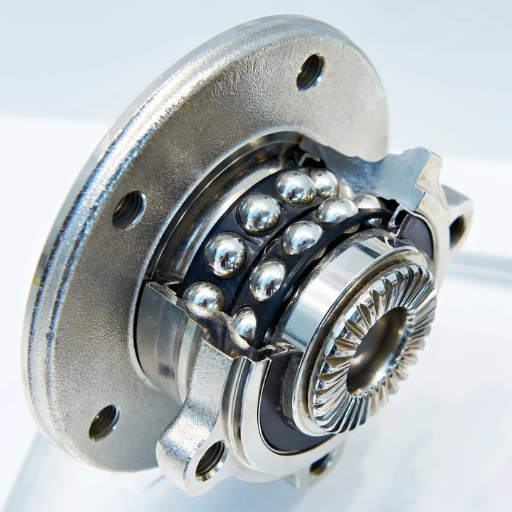
I have appreciated how a variety of aspects can trigger wheel bearing failure, and being an industry professional, Inadequate lubrication or maintenance and incorrect lubrication is one such reason that can be a cause of bearing failure. Friction requires energy to resist motion, which, with time, leads to heat and component wear and or damage, which eventually results in the failure of the component. When considering wheel bearing failure, one also has to take into account excessive heat or moisture, which can influence the service life of the bearing. Likewise, poor installation, manufacturing defects, and excessive loading can also trigger early bearing failure. On the other hand, understanding the root cause can inform the necessary steps that need to be taken to ensure the optimal service life and performance of wheel bearings.
Factors Leading to Worn Bearings
kindly shed some light on what you believe is the key contributor to the wear and tearing of wheel bearings:
- Lack of Lubrication: Lubrication depletion caused by either unavailability of lubrication or use of incorrect lubricant can lead to increased loads and roughness in bearings components. Timely service and lubrication are required to avoid early failure of bearings.
- Harsh Conditions:Exposure to high temperatures, high humidity and other adverse weather exposure can shorten the life span of wheel bearings. This exposure can degenerate the lubricant and can lead to rusting of bearing material.
- Installation Issues: Inadequate installation resulting in improper fitting of the bearings or adjusting normal play and torque settings can make the bearings wear out before their due date. Always install wheel bearings according to manufacturer instructions and get help from an expert.
- Manufacturing Defects: Although they are rare, manufacturing errors can have an impact on the performance and lifespan of wheel bearings. These should include defective parts, poor heat treatment, and bad machining.
- Excessive Loading: When you overload a car or increase the loads greater than the limitation of the vehicle it creates unnecessary pressure on the wheel bearings which results in wear and eventually break down of the bearings.
With knowledge of the factors causing wheel bearings to wear out, adequate measures may be taken to prevent such cases through proper maintenance, servicing of the bearings in good time, and increasing the lifespan of wheel bearings.
How Worn Wheel Bearing Affects Your Vehicle
it’s safe to say that understanding how worn wheel bearings can affect the vehicle as a whole is very important. Indeed, a badly worn wheel bearing will not only serve the intended purpose but would compromise, to a large extent, the performance and, more importantly, the safety of the vehicle. That’s why, to be clear, here are a few key ways in which worn wheel bearings can affect your vehicle:
- Increased Friction and Heat: The deterioration of wheel bearings may create additional friction between the wheel and axle, resulting in overheating that can severely damage other parts of the wheel assembly.
- Uneven Tire Wear: In some cases, the vehicle may experience some uneven wear in the tires due to worn out wheel bearings, leading to the tires needing to be replaced sooner than the recommended mileage or treadwear indicators would suggest. This not only incurs unnecessary costs but also reduces road performance.
- Poor Steering Response: In certain cases, a loosened wheel bearing may change how the steering feels by making it less responsive. This may become a problem when undertaking sharp turns or other aggressive movement where control is required.
- Noisy Operation: Defective wheel bearings would cause excessive noise around the wheels in the form of a steady rumble, hum or grinding sound. This sign will only become more distinct with time, thus it is essential to pay close attention to it.
In order for the vehicle to remain safe and fully functional, it is crucial to seek a solution to the symptoms associated with worn wheel bearings as soon as possible. Timely and careful maintenance of the vehicle by a professional specialist can prevent the failure of the bearings and, thus, minimize problems.
When Is It Time to Replace Wheel Bearings?
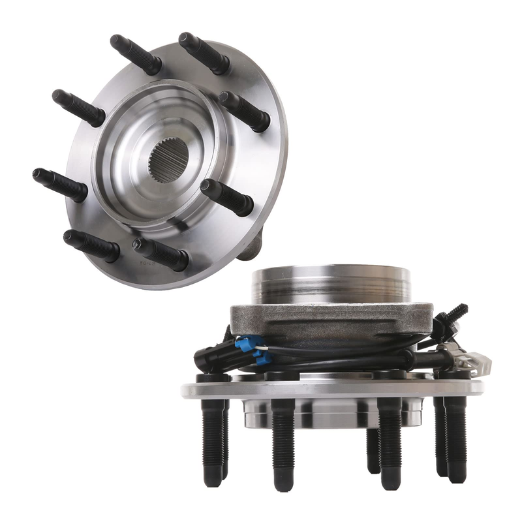
Understand the Early Signs and Symptoms of Horn Wheel Bearings Replacement As a Field Expert. Signs include excessive play or looseness of the wheel, odd sounds including grinding or rumbling, and increased vibration or lack of stability while driving. If there is any such sign, you must visit a qualified mechanic for a more comprehensive and immediate replacement of the worn out wheel bearings. These issues must be fixed the earlier the better to maintain the safety and efficiency of the vehicle.
Understanding the Signs and Symptoms
The first thing to note is that you understand how crucial the signs and symptoms of worn wheel bearings are for both the safety and performance of your vehicle. Too much play or looseness in the wheel, noise and grating rumbling, and instability while driving are all general loud indicators for you to change your wheel bearings. If you witness any of these symptoms, you should speak to an experienced automotive mechanic and get a thorough assessment so that you can have a replacement done. This will guarantee the effective performance of the vehicle and increase safety on the road.
Consulting a Mechanic for Diagnosis
whenever vehicles have problems it is best to seek and advise them, especially when it comes to wheel bearing issues. They have the necessary skills, experience, and necessary tools to examine the condition of the wheel bearings and decide if they need replacing or not. Although it can be very appealing to perform the diagnosis and replacement yourself, it is better to allow experts to carry out this task so that the job is done satisfactorily and no complications or risks affect safety later. By all means go to a mechanic and let him do his job, this will save you the worry and also help you to keep the vehicle in the best condition.
How Much Does It Cost to Replace a Bad Wheel Bearing?
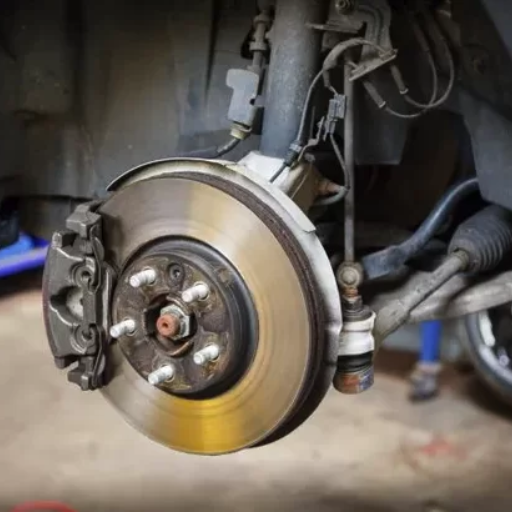
- The question of how much a bad wheel bearing replacement costs has multiple answers, depending on a couple of things. First of all, the make and model of a particular car, the geography where the car is located, and lastly, whether the vehicle owner wishes to carry out that replacement themselves or prefers professional assistance are all approximate factors.’
- Should you choose to replace the wheel bearing yourself, it is normally priced between $50 and $150 and can go even higher based on the quality and brand. It is also more than likely that you will require a bearing press or bearing puller which you will need to further over your budget because they are considered specialized equipment.
- Alternatively, the rates of the repair shop may range between $100 to $200 per hour, and more, and if any additional services such as an extra part, wheel replacement, alignment or balancing is required, these will additionally increase the cost as well. But It is also worth mentioning that, if you seek professional help, the expenses may differ widely, depending on the professional that you go to.
- A good way to gather an accurate estimate is to reach out to trusted repair shops or mechanics within your vicinity. You would be able to be offered such an estimate minus cost estimates for specific items of your vehicle. Always keep in mind that doing so will enhance the durability of your vehicle engine the time needed to do so will be worth it.
Factors Affecting Wheel Bearing Replacement Costs
it can be noted that several aspects can determine the pricing of wheel bearing replacement; these include:
- Type of Vehicle: The type of vehicle you drive dictates the price of a wheel bearing replacement even at brand new mechanics. A few vehicles, for instance, may feature intricate and unique wheel bearing designs and in such a case, replacement is going to take longer than anticipated.
- Quality of Replacement Parts: In addition, the type of parts selected for replacement is significant. If one chooses wheel bearings of better quality, they will probably about $1.80 more augmenting the final price, however, they most likely will have comparatively higher performance durability.
- Labor Rates: Workshop rates can be deducted by a variety of repair workshops and mechanics, which often add up to the total cost of replacing wheel bearings.
- Additional Services: Certain extra services such as wheel alignment or balancing may be obligatory in addition to the replacement itself, which raises the overall expenses.
Reaching out to reliable mechanics and repair shops is the key to obtaining a more precise quotation regarding the replacement of your wheel bearings. They will be able to determine the particulars of your vehicle or equipment and give you a comprehensive cost quotation according to your parameters. Good quality work restoration and the right level of the wheel bearing replacement parts are very important to the car’s performance features and lifespan.
Comparing Prices: DIY vs. Professional Service
when you replace a wheel bearing, remember that there are circumstances which would dictate whether or not I would attempt to replace it myself or enlist the help of a trained professional. Although it is DIY, it looks inexpensive, but it has its pros and cons. For this question, here is a brief response:
- DIY Approach: If you have the necessary skills, tools, and knowledge, you can do the job yourself and avoid paying labor costs. Handiwork however is cumbersome and time-intensive. Furthermore, if the job is not performed correctly, damage to the car may grow substantially and ultimately cost more money to repair.
- Professional Service: Enough old wives’ tales; let the professionals handle it. A qualified mechanic will ensure the right replacement is made in the shortest time. Start looking for a one-bearing replacement expert; there are a few. Removing the old bearing and installing a new one only requires a proper technique and some tools.
It is preferable to consider your skills, past experience and the amount of time you are willing to dedicate before making a decision whether to attempt working on the car yourself or hiring a professional. Moreover, asking a reliable mechanic or firm that deals with car repairs will be helpful as they can be able to provide an accurate cost figure that is tailored to your particular vehicle and situation. Also to note, emphasize hiring skilled attention-to-detail artisans and utilizing quality replacement parts to ensure that the wear and tear for the wheel bearings of your vehicle is minimal.
Reference
- Meineke: 6 Signs of a Bad Wheel Bearing
- SKF Vehicle Aftermarket: 4 Symptoms & Signs of a Bad Wheel Bearing
- 365HubsPro: 8 Signs You Have a Wheel Bearing Problem
Frequently Asked Questions (FAQs)
Q: What are the common symptoms of bad wheel bearings?
A: Common symptoms of bad wheel bearings include unusual wheel bearing noise such as humming, grinding, or growling, a loose steering wheel, uneven tire wear, and vibrations in the steering or suspension.
Q: How can I identify bad wheel-bearing symptoms while driving?
A: While driving, you may notice bad wheel-bearing symptoms like a humming or growling noise that gets louder with speed and vibrations and a steering wheel that feels loose or wobbly.
Q: What does wheel bearing noise sound like?
A: Wheel-bearing noise often sounds like a humming, grinding, or growling noise that gets louder as you accelerate. It can also change in pitch when you turn left or right.
Q: How does a failing wheel bearing affect my vehicle’s performance?
A: A failing wheel bearing can affect your vehicle’s performance by causing uneven tire wear, reducing fuel efficiency, affecting the ABS, and potentially causing the wheel to wobble or shake the wheel.
Q: Can a failing wheel bearing trigger the ABS warning light?
A: Yes, a failing wheel bearing can trigger the ABS warning light by causing irregularities in the wheel speed, which the anti-lock braking system monitors closely.
Q: What causes wheel bearings to fail?
A: Wheel bearings fail due to reasons such as wear and tear from high mileage, exposure to water and dirt, insufficient lubrication, and higher loads on the wheel beyond the bearing’s capacity.
Q: How can I check if my wheel bearing is bad without professional help?
A: You can check if your wheel bearing is bad by jacking up the wheel, shaking the wheel to check for play in the bearing, and listening for wheel bearing noise. However, it’s advisable to seek professional inspection.
Q: When should you replace a wheel bearing?
A: You should replace a wheel bearing as soon as you notice symptoms of a failing wheel bearing, such as noise, vibration, or play in the bearing, to avoid further damage.
Q: Can ignoring bad wheel-bearing symptoms lead to more serious problems?
A: Yes, ignoring bad wheel bearing symptoms can cause the wheel to become unstable, affect braking performance, and potentially lead to wheel detachment, posing serious safety risks.
